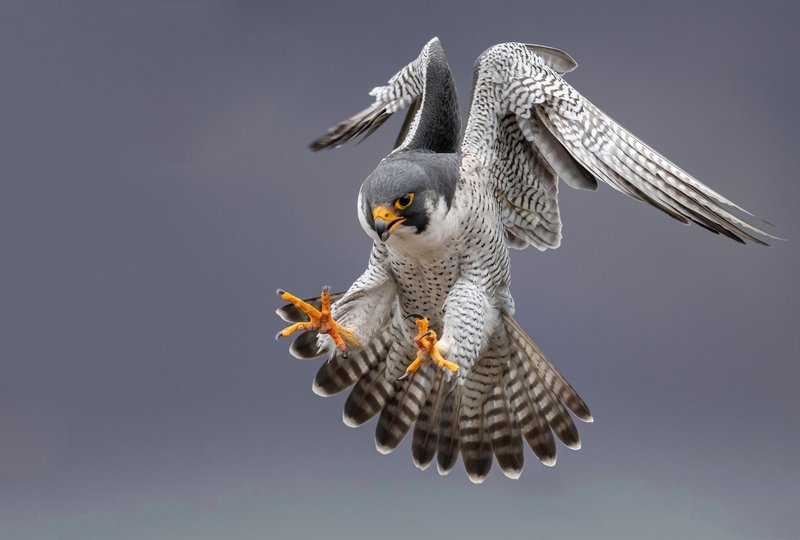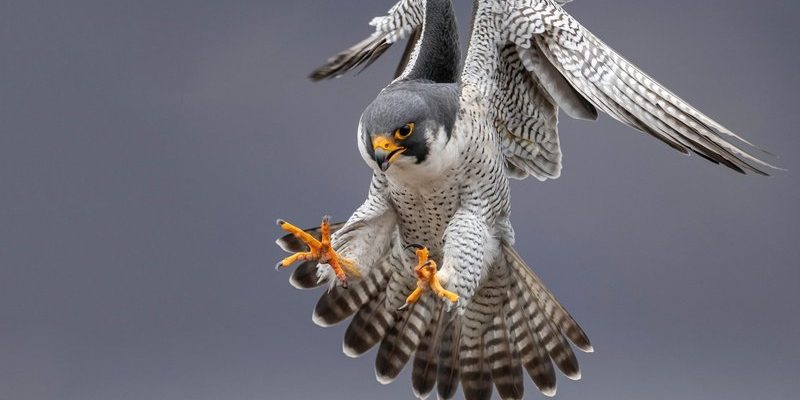
Identifying a falcon isn’t just about spotting a bird in the sky; it’s about understanding its unique characteristics. Some people can recognize a falcon at first glance, while others may struggle to tell one from a hawk or an eagle. Honestly, it’s like learning to recognize different cars on the road—they all have features that make them distinct. With a little practice and some tips I’m going to share, you’ll be able to identify these magnificent creatures with ease.
Understanding Falcon Characteristics
Falcons are known for their distinctive features that set them apart from other birds of prey. The first thing you’ll likely notice is their sharp, hooked beak. This beak isn’t just for show; it’s designed for tearing through the flesh of their prey. Falcons also have keen eyesight, allowing them to spot small animals from great distances. Imagine having a pair of binoculars built right into your eyes!
Their wings are another telltale sign. Falcons have long, pointed wings that enable them to dive quickly and fly at impressive speeds. In fact, the peregrine falcon is known for being the fastest bird in the world, reaching speeds of over 240 mph in a dive. Just think about that! When you see a bird soaring high with a quick, agile flight, there’s a good chance it’s a falcon.
In addition to their physical traits, falcons often have striking color patterns. Many species are gray, brown, or even rusty red, with lighter underparts and distinctive markings. The coloration helps them blend into their surroundings, making them stealthy hunters.
Common Falcon Species to Look For
When it comes to identifying a falcon, knowing the common species can really help. Here are a few of the most well-known falcons you might encounter:
- Peregrine Falcon: Perhaps the most famous falcon, recognized for its speed. Look for a blue-gray back and a distinct black “mustache” marking on its face.
- American Kestrel: The smallest falcon in North America, with a vibrant mix of colors—burnt orange and slate blue. If you see a tiny bird hovering in the air, it’s likely a kestrel.
- Merlin: A medium-sized falcon that is often mistaken for a small hawk. It has a stocky build and is known for its aggressive hunting style.
Each of these species has its own unique traits, so when you’re out birdwatching, keep an eye out for these characteristics. Think of it like being on a treasure hunt; once you know what you’re looking for, it becomes much easier to spot the clues!
Where to Spot Falcons
Knowing where to look is just as important as understanding how to identify a falcon. Falcons are found all over the world in various habitats, from urban areas to open fields and coastal regions.
Here are some top spots to increase your chances of seeing falcons:
- Open Fields: Falcons like to hunt in open areas where they can easily spot prey. Look for them perched on telephone poles or soaring above.
- Cliffs and Mountains: Certain species prefer high-altitude locations where they can dive down to catch their food. If you’re near a rocky area, keep your eyes peeled.
- Cities: Believe it or not, many falcon species thrive in urban environments. They often nest on tall buildings and hunt pigeons. Keep an eye on skyscrapers!
Timing also plays a role. Early morning or late afternoon are often the best times to see them in action. They tend to be more active during these hours, hunting for their next meal. So, grab your binoculars and head out during these peak times!
Best Ways to Observe Falcons
Okay, you know what to look for and where to find them. But how can you observe falcons without scaring them away? Here are some tips to ensure you have a great experience:
1. Use Binoculars: A good pair of binoculars can really enhance your viewing experience. Look for ones with a magnification of 8x or higher to get a closer view.
2. Stay Quiet: Birds are easily startled. Keep your voice down, and try to move slowly. The quieter you are, the more likely they are to stick around.
3. Be Patient: Sometimes it takes a while for birds to appear. Find a comfortable spot, settle in, and enjoy the moment. You never know when a falcon might swoop by!
4. Respect Their Space: Remember, these are wild animals. Give them room to move and hunt without interference. The goal is to observe, not to disturb.
By following these tips, you’ll have a better chance of witnessing falcons up close, and you might even catch one in action during its spectacular dives!
Listening for Falcon Calls
Another way to identify falcons is by their calls. While their appearance is striking, their sounds can also offer clues. Many falcons make sharp, high-pitched sounds, often described as “kak-kak-kak.”
Here’s how you can use calls to your advantage:
– Familiarize Yourself: Spend some time listening to recordings of falcon calls. The more you know, the easier it will be to identify them in the wild.
– Context Matters: Pay attention to the environment. If you hear a distinct call nearby, look around! Falcons often communicate with each other while hunting or nesting.
– Watch for Responses: Sometimes, other birds will react to falcon calls. If you see smaller birds alarmed or flying away, there might be a falcon nearby.
Understanding their vocalizations can significantly enhance your birdwatching experience and make it more enjoyable.
Why Identifying Falcons Matters
You might be wondering, why should I care about identifying falcons? Well, there are a few compelling reasons:
– Conservation Awareness: Understanding and recognizing falcon populations can help promote conservation efforts. Many species face threats due to habitat loss and pollution. By knowing about them, you can contribute to their protection.
– Connecting with Nature: Identifying birds like falcons fosters a deeper connection to nature. It encourages us to spend more time outside, enjoying the beauty around us.
– Birdwatching Community: Participating in birdwatching can lead to new friendships and shared experiences. It’s a wonderful way to connect with a community that shares your passion for wildlife.
Falcons are fascinating creatures, and getting to know them can inspire a greater appreciation for the natural world.
Final Thoughts on Falcon Identification
So, there you have it! By familiarizing yourself with the characteristics, species, habitats, and calls of falcons, you’re well on your way to becoming a skilled birdwatcher. Remember, spotting a falcon isn’t just about doing a checklist; it’s about enjoying the experience of being in nature and celebrating these incredible birds.
Next time you head outdoors, keep your eyes (and ears) open. You never know what you might find. Happy birdwatching!

